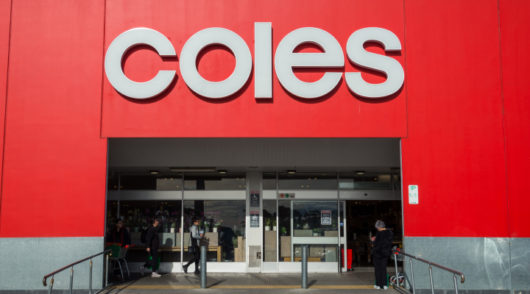Last year, retailers were forced to focus on finding ways to mitigate the impact of the cost-of-living crisis on shoppers. This year, while consumers are still struggling to adapt to higher prices for staple goods and services, they are still spending on discretionary items creating a retail market where brands compete fiercely for their share of the consumer’s paycheque.
Choco Up – a company that helps e-commerce brands grow and scale their business with fast, flexible and founder-friendly revenue-based financing – decided to look into consumer intentions and behaviours to find out what else drives purchasing decisions in today’s retail environment beyond price.
Choco Up surveyed more than 500 shoppers and asked them what they love about their favourite retailers – and why they avoid others. The results were surprising – and uncovered some intriguing new shopper personas that go beyond just age and gender demographics. The research has been collated in a report Delighting the 2024 Shopper: The Do’s and Don’ts of Keeping Customers in a Tough Economy.
Choco Up’s founder and CEO Percy Hung says e-commerce has revolutionised the way consumers shop with today’s shoppers demanding personalised experiences, seamless transactions, and swift delivery – all while expecting exceptional value and quality.
“Choco Up commissioned this report because we believe it is paramount that leaders of e-commerce businesses who are seeking sustained success understand the diverse shopper personas in today’s retail market.”
One clear finding stood out from others, explains Hung: “What matters online doesn’t necessarily have the same impact in a physical store environment, and vice versa.”
“We also found that while price remains a major driver of loyalty, a seamless and positive shopping experience is equally important – both online and offline.”
Hung says understanding your customers is critical in today’s competitive retail landscape.
“Our report has illuminated the key factors influencing shopper behaviour in both online and physical stores.”
Hung highlights three key takeaways from the report:
Price rules
Price is always important to consumers – and never more so than during a cost-of-living crisis. Choco Up’s survey found competitive pricing is an equally top priority for consumers shopping online or in physical stores.
Having the cheapest price on a particular item in which the shopper is interested – or the ‘best price’ – when shopping online was cited as important by 44 per cent of respondents. Free delivery was nominated by 40 per cent. Those percentages underline the importance of price – and value – as key factors in the relationship between a retailer and its customers.
Experience matters
Regardless of channel, a smooth and efficient shopping journey is crucial for customer satisfaction. This does not mean just the ease of navigating a website – or the aisles of a physical store – but extends to being able to quickly find the products sought and ensuring a smooth, efficient checkout process with as few steps as possible.
Online, while price is the standout reason consumers will love a retailer, out-of-stock (at 44 per cent) is the most common reason consumers will avoid one.
“They don’t want to feel they have wasted their time searching for something, comparing options and settling on one – only to find out the retailer has none left on the shelf,” explains Hung.
“Finding out it’s unavailable feels like a dead end. The beauty of online shopping is its ease. But an out-of-stock item throws a wrench in that. The shopper now has to start their search again, possibly on another website, to find what they need.”
Frequent out-of-stock experiences can also make a retailer seem unreliable, leaving shoppers to wonder if the store has poor inventory management – and even if they can trust any information on its website.
Know your customer
For today’s retailer, no matter the channel, knowing and understanding your customers and their needs is critical to tailoring strategies for optimal engagement.
This stretches beyond the obvious need to tailor email and marketing communications to align with their demographic – so you don’t end up promoting baby goods to retirees, for example, or womenswear to single men.
Hung advocates investing in really knowing your customers buy using sophisticated loyalty program analysis and market research, so you can stock – and recommend – exactly what they’re looking for.
“Knowing your customer also includes offering a well-curated selection of products that cater to their needs and interests. This might involve stocking unique or locally sourced items that cannot be easily found online,” he continues.
The importance of strategic financial management
Given all these challenges, thriving in the competitive e-commerce landscape requires strategic financial management and prudent investment decisions, says Hung. That means working capital financing is critical for businesses looking to scale and optimise their operations.
“Online retail operates at a fast pace and requires efficient inventory management to avoid stockouts and fulfilment delays, which can lead to customer dissatisfaction and lost sales. By using working capital financing, businesses can maintain optimal inventory levels, invest in inventory forecasting technologies, and take advantage of bulk purchasing discounts to improve operational efficiency and customer satisfaction.”
Hung believes the report illuminates the symbiotic relationship between shopper personas, strategic financial management, and working capital financing in the e-commerce ecosystem.
“By embracing a customer-centric approach, harnessing the power of data-driven insights, and effectively leveraging working capital, businesses can survive and thrive in today’s dynamic and ever-changing digital marketplace.”
- Read more about these personas and how you can meet their needs as a retailer by downloading Choco Up’s report Delighting the 2024 Shopper: The Do’s and Don’ts of Keeping Customers in a Tough Economy. It’s free here online.






